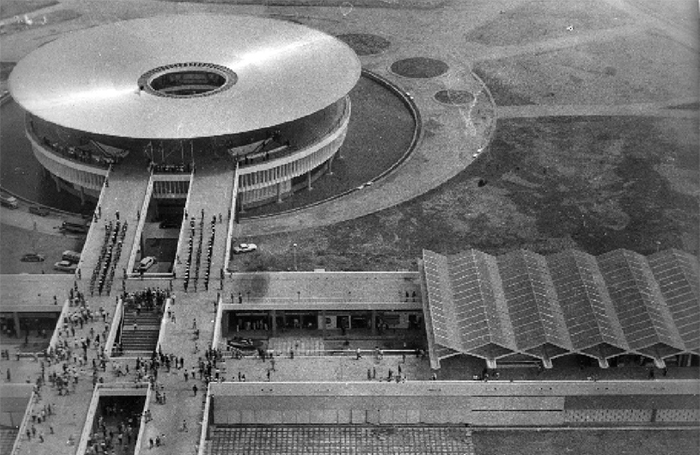Architecture in global socialism: Eastern Europe, West Africa, and the Middle East in the Cold War
Lukasz Stanek, The University of Manchester
Awards RIBA President's Awards for Research 2020
Category History and Theory

In the course of the Cold War, architects, planners, and construction companies from socialist Eastern Europe collaborated with those in West Africa and the Middle East in order to bring modernisation to the developing world. This research is the first to study their work, and to show how it was mobilised within global networks of cooperation established by socialist countries, or what I call “socialist worldmaking”. The resulting monograph (2020) shows how the collaboration between socialist and postcolonial countries reshaped five cities: Accra (Ghana), Lagos (Nigeria), Baghdad (Iraq), Abu Dhabi (United Arab Emirates), and Kuwait City (Kuwait) between the 1950s and the 1980s. Local authorities in these cities drew on Soviet prefabrication systems, Hungarian and Polish planning methods, Yugoslav and Bulgarian construction materials, Romanian and East German standard designs, as well as professionals from across Eastern Europe. In some countries, including Ghana in the 1960s, modern architecture from Eastern Europe was instrumental in the adaptation of the socialist development model to tropical conditions. Other countries, such as 1970s Nigeria, invited state-socialist companies to stimulate competition between foreign enterprises. In North Africa and the Middle East, governments and architects exploited the differences between socialist foreign trade and the emerging global construction market during the closing decades of the Cold War. By focusing on their work, this study inscribes socialist worldmaking into a more complex and antagonistic genealogy of architecture’s globalisation. Carried out between 2009 and 2019, this research draws on public and private archives on four continents, interviews, and fieldwork. It combines close readings of case studies with distant readings of large collections of data, studied and evidenced by means of digital tools. This research challenges inherited visions of global urbanisation and its architecture, and offers their new understanding for historians of architecture, planning, and construction, historians of the Cold War, as well as practitioners and educators.
Read more on architecture in global socialism in the RIBA Journal: 'Socialist internationalism and the Global South'.






